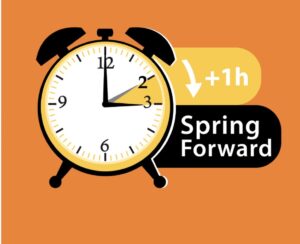
It is that time of year when daylight saving time (DST) goes into effect on March 14. Although “springing ahead” means more sunshine in the warmer months, some worry that the time change will have detrimental impacts on health and well-being.
For those who suffer from seasonal depression or seasonal affective disorder (SAD), longer days and warmer weather will potentially throw their bodies and feelings into a downward spiral.
SAD, also known as major depressive disorder with seasonal pattern, is a form of depression that happens every year in the same season. It is more common in the winter, but it can affect some people in the summer.
According to Psychology Today, it affects 10 million Americans with up to 66 million more prone to have moderate SAD.
The purpose of daylight saving time transitions is to optimize daylight access during the period in which people are most active. But as the seasons shift – so do our attitudes, energy levels, willingness to socialize and even sleep habits.
According to the Mayo Clinic, symptoms of winter depression include oversleeping, difficulty concentrating and weight gain. By contrast, summer depression symptoms include agitation, insomnia and loss of appetite.
Spring and summer depression can be especially problematic, because while most people enjoy the increased amount of sunlight and higher temperatures, those suffering from it feel hopeless.
“It makes me feel stuck,” says Tatianna Thomas, a student at Gordon State College. “It’s like I’m in a cycle of trying to be happy, but my body and mind won’t let me.”
Going back-and-forth between standard and daylight time is not healthy because it disrupts a person’s circadian rhythm.
“People think the one-hour transition is no big deal, that they can get over this in a day, but what they don’t realize is their biological clock is out of sync,” said Beth Ann Malow, MD, Burry Chair in Cognitive Childhood Development.
A recent study by Science Daily found that the seasonal transition to and from DST has long-term health implications and can be associated with an elevated risk of heart attack and stroke.
“It’s not one hour twice a year. It’s a misalignment of our biological clocks for eight months of the year,” Malow said. “When we talk about DST and the relationship to light, we are talking about profound impacts on the biological clock, which is a structure rooted in the brain. It impacts brain functions such as energy levels and alertness.”
The Department of Transportation (DOT) is responsible for daylight saving time and all time zones in the U.S.
If you ever feel stressed or encounter moments of depression, it may be time to seek professional help. Rehab and therapy will help you understand how to manage this condition and potentially avoid new episodes.